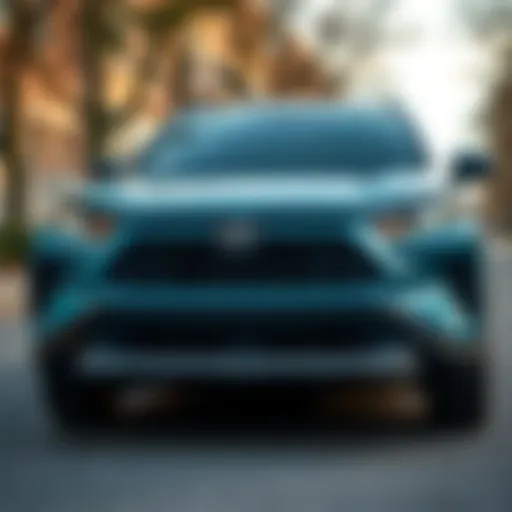Exploring Full Coverage Insurance for Older Vehicles


Intro
Navigating the landscape of full coverage insurance for older vehicles necessitates an understanding of various complexities. Owners of these vehicles often face distinct challenges due to their unique qualities. As time progresses, several aspects of the car—its value, condition, and related costs—evolve. This guide is essential for automotive enthusiasts and potential buyers, as it provides insights into making well-informed decisions pertaining to older cars and their insurance options.
When we speak of full coverage, we commonly refer to policies that include both comprehensive and collision insurance. However, the essence of ‘full coverage’ takes on different forms based on the vehicle's age and condition. For an older car, this would require deeper consideration.
In the following sections, we will dissect the various dimensions of full coverage options suitable for older vehicles, along with the many factors influencing them. Readers can expect to explore information that not only assists in making optimal insurance choices but also ensures they understand the broader context involved with older car ownership.
Understanding Full Coverage Insurance
Understanding full coverage insurance is crucial for those considering insurance options for older vehicles. In general, full coverage offers additional protection compared to basic liability insurance. This makes it an attractive choice for car owners who value their vehicles and want to safeguard against various risks. It provides peace of mind knowing that unexpected incidents could be financially managed.


Definition of Full Coverage Insurance
Full coverage insurance typically refers to a combination of two major components: liability insurance and physical damage coverage. Liability insurance covers third-party injuries and property damage in the event of an accident wherein the policyholder is at fault. It does not, however, cover any damage to the insured's own vehicle. Physical damage coverage splits into two parts: collision coverage and comprehensive coverage.
Components of Full Coverage
Full coverage is made up of three main parts that together provide extensive insurance for vehicle owners. Each plays a distinct role.
Liability Coverage
Liability coverage is essential for protecting against legal responsibilities if an accident occurs. This component is designed to cover bodily injury and property damage, which are often costly repercussions of a collision.
A key characteristic of liability coverage is its requirement by law in almost every state. This makes it not only an obligatory choice for vehicle owners but also a prudent one. Liability coverage is simple: if you're deemed at fault in an accident, the costs for medical treatment or repairs suffer from this protection.


Its main advantage is safeguarding one’s finances; a serious accident could lead to extensive medical bills or damages that far exceed basic insurance levels. However, while liability coverage is crucial, it lacks the comprehensive forms of protection that full coverage seeks to address.
Collision Coverage
Collision coverage safeguards the insured against damages incurred by incidents involving other vehicles or stationary objects, such as guardrails or buildings. Unlike liability coverage, collision does address repair payments for the owner’s vehicle when an accident occurs.
The characteristic feature of collision coverage includes its straightforward nature. It applies regardless of fault. If an accident leads to vehicle damage, this aspect will cover necessary repairs, bringing comfort that your financial losses will be limited.
An advantage to collision coverage is its broad reach when it comes to accidents. However, a disadvantage can arise in the form of potential higher deductibles each time a claim happens, which could deter some from seeking coverage as they might have to pay out-of-pocket first.
Comprehensive Coverage
Comprehensive coverage fills the gaps left by liability and collision insurance by covering damages not related to collisions with other vehicles. It protects against a wider array of risks making it a fundamental coverage component in full insurance policies.


The key function of comprehensive coverage includes protecting from theft, fire, vandalism, and even weather-related damage. Its primary benefit lies in the extensive array of perils that it addresses. This coverage ensures that car owners are less vulnerable to common hazards of the road and ownership.
Nevertheless, this option is accompanied by its disadvantages, such as the extra cost on top of the base premium for the insurance policy. Car owners need to evaluate whether they want to incur those costs in exchange for the wider coverage.
Comprehensive coverage offers broad protections, covering not only accidents but also theft and natural disasters.
In summary, full coverage insurance combines multiple aspects of protection suited for various needs of older vehicle owners. Understanding how these components function enhances informed decisions for car insurance within this targeted category.
Factors Influencing Insurance Coverage for Old Cars
Understanding the factors that impact insurance coverage for older vehicles is essential for making informed decisions. As cars age, their market value, condition, and the policies of insurance providers all play a crucial role in determining coverage options. This knowledge can ultimately help save money and provide adequate protection. Here, we will explore three significant factors: vehicle age and condition, market value considerations, and insurance provider policies.
Vehicle Age and Condition
When assessing insurance coverage for older cars, their age and condition are vital. Older vehicles typically have different coverage needs compared to new cars. As a car accrues miles and shows wear, its value may diminish, altering the necessity and scope of insurance.
- A well-maintained classic vehicle might command a higher premium than a rusty model that isn’t roadworthy.
- It’s important to assess whether the car needs cosmetic or mechanical restorations, as this can influence coverage choices.



